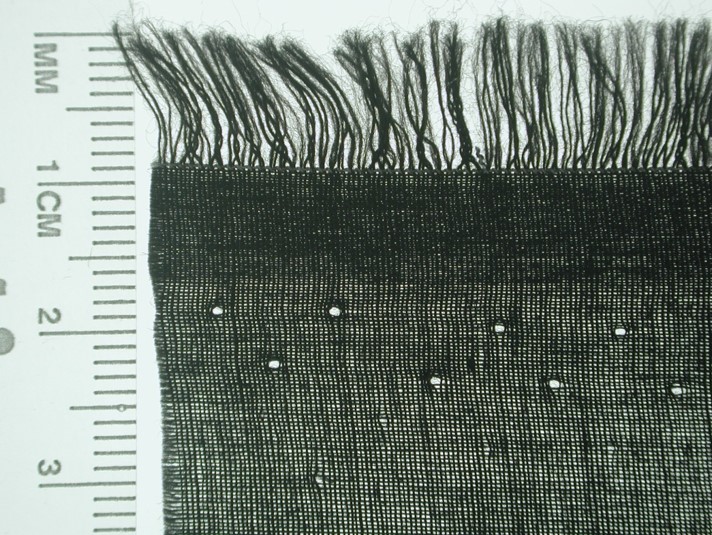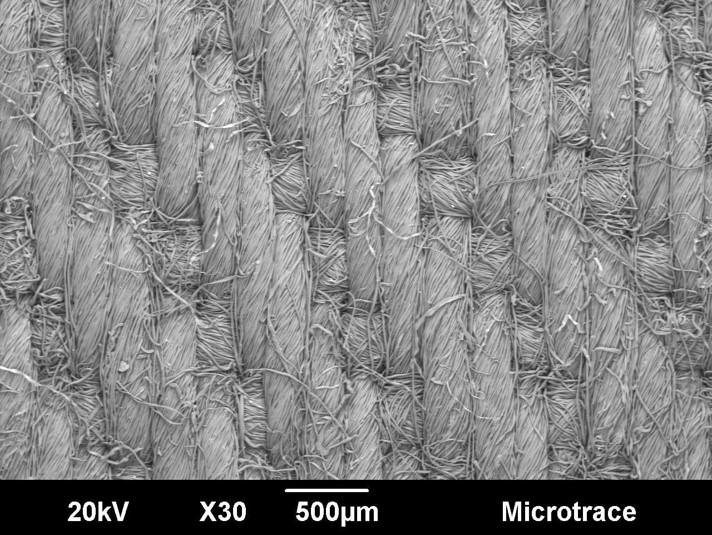AATCC Fabric Microscopy Article Interviews Chris Palenik
The newest edition of AATCC Review (Vol. No. 1 January/February 2021) features an interview with Microtrace Senior Research Microscopist Chris Palenik. In the article, entitled, “Solving Crimes: When Textiles Come to the Fore,” Dr. Palenik discusses the critical role that fabrics can play in forensic investigations. While people often think about trace evidence consisting of fibers, the role of fabrics (from which fibers can originate) is often overlooked.
Microtrace has analyzed fabrics to compare and determine the origin (or source) of a fabric, and to characterize them, especially when they are burned, charred, or composed of an unusual fiber or coating. In some instances, the weave, composition, and coatings of a fabric can be specific to a particular product or geographic location. Microtrace staff have served as expert witnesses in support of cases involving the properties of fabrics and their components as they pertain to both patent and advertising claims. For instance, Microtrace has analyzed fabrics to determine if a coating is present, to evaluate the efficacy of a coating (such as a water repellant), and to understand if an antimicrobial is present and effective.
In criminal cases, Microtrace has analyzed fabrics to determine the origin of rips, tears, cuts, and even to determine if a hole originated from a bullet. In the world of art, antiquities, and collectibles we have examined ancient fabrics to determine their composition; we have also looked at canvases from paintings for anachronisms that would suggest a modern reproduction. For the insurance community, we have analyzed fireman’s turn-out gear to evaluate the effects of fighting an acid fire, and have analyzed batches of jerseys to determine why an autograph (signature) on one batch started to fade and disappear.
Traditional forensic analyses of fabrics often focus on individual fibers. At the forefront of this discussion is Locard’s Exchange Principle, a key tenet of forensic microscopy; it suggests that whenever two objects contact each other, there is a material exchange between them. In AATCC’s article, Dr. Palenik uses case studies from Microtrace’s history, including the Green River Murders, to discuss trace evidence generated by fabrics, as well as, fabric component and fabric alteration analysis. In particular, he discusses the use of mass spectrometry, and Microtrace’s library of reference colorants.
The full article can be found here.
AATCC Review
AATCC Review is a bimonthly publication of the American Association of Textile Chemists and Colorists. AATCC (and its predecessors) has published textiles research and news since 1969. AATCC Review covers fibers to finished products, and chemical synthesis to retail practices. It contains technical papers and feature articles on topics with the same scope as the peer-reviewed research journal, the AATCC Journal of Research.
The American Association of Textile Chemists and Colorists develops the test methods the textile industry uses to ensure product quality.
How May We Help You?
Contact usto discuss your project in more detail.











